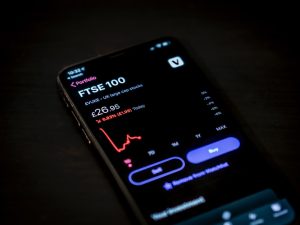Trading Wedge Patterns in Forex: Strategies and Tips
In the world of forex trading, technical analysis plays a crucial role in helping traders identify potential trading opportunities. One commonly used chart pattern that forex traders rely on is the wedge pattern. Wedge patterns are powerful indicators of potential trend reversals or continuations, and understanding how to identify and trade them can greatly enhance a trader’s chances of success in the forex market.
What is a Wedge Pattern?
A wedge pattern is a price formation on a forex chart that resembles a triangle, but with distinct characteristics. It is formed by two converging trend lines, with one line sloping upward and the other sloping downward. The price movement within the wedge pattern typically narrows as it approaches the apex, creating a visual representation of decreasing volatility.
There are two types of wedge patterns: rising wedges and falling wedges. A rising wedge is characterized by an upward-sloping top line and a steeper upward-sloping bottom line. Conversely, a falling wedge has a downward-sloping top line and a steeper downward-sloping bottom line. Both types of wedges indicate a potential change in the current trend.
Identifying Wedge Patterns:
To identify a wedge pattern, traders need to draw trend lines connecting the swing highs and swing lows of the price action. The upper trend line connects the swing highs, while the lower trend line connects the swing lows. As the price oscillates between these two lines, the wedge pattern forms.
It is important to note that the length of time it takes for a wedge pattern to form can vary. Some wedges may form over a few days, while others may take several weeks or even months. Regardless of the time frame, the principles of wedge pattern analysis remain the same.
Trading Strategies for Wedge Patterns:
Wedge patterns can provide valuable trading signals, indicating potential trend reversals or continuations. Here are two popular trading strategies that traders can employ when trading wedge patterns:
1. Breakout Strategy:
The breakout strategy involves waiting for the price to break out of the wedge pattern, indicating a potential trend continuation. Traders can enter a trade in the direction of the breakout, placing a stop-loss order below the lowest point of the wedge pattern. This strategy assumes that the breakout will lead to a significant price movement in the same direction.
2. Reversal Strategy:
The reversal strategy involves anticipating a trend reversal when the price breaks out of the wedge pattern in the opposite direction. Traders can enter a trade against the breakout, placing a stop-loss order above the highest point of the wedge pattern. This strategy assumes that the breakout is a false signal and that the price will reverse its direction.
Tips for Trading Wedge Patterns:
While trading wedge patterns can be highly profitable, it is important to consider the following tips to enhance your trading success:
1. Confirm with Other Indicators:
Wedge patterns should not be traded in isolation. It is crucial to confirm the pattern with other technical indicators, such as oscillators or moving averages, to increase the probability of a successful trade.
2. Consider the Timeframe:
Different wedge patterns may appear on various timeframes. It is essential to consider the timeframe you are trading on and adjust your trading strategy accordingly. A wedge pattern on a daily chart may have more significance than one on a 15-minute chart.
3. Practice Proper Risk Management:
As with any trading strategy, risk management is vital. Set appropriate stop-loss and take-profit levels to protect yourself from significant losses and secure your profits.
4. Use Price Targets:
Wedge patterns provide an opportunity to set price targets based on the height of the pattern. By measuring the distance from the initial breakout point to the highest/lowest point of the pattern, traders can project potential price targets for their trades.
Conclusion:
Trading wedge patterns in forex can be a profitable strategy if implemented correctly. By mastering the identification of wedge patterns and employing appropriate trading strategies, traders can enhance their chances of success in the forex market. However, it is crucial to remember that no trading strategy is foolproof, and risk management should always be a priority. By combining wedge pattern analysis with other technical indicators and practicing proper risk management, traders can increase their potential for profitable trades in the dynamic world of forex trading.





